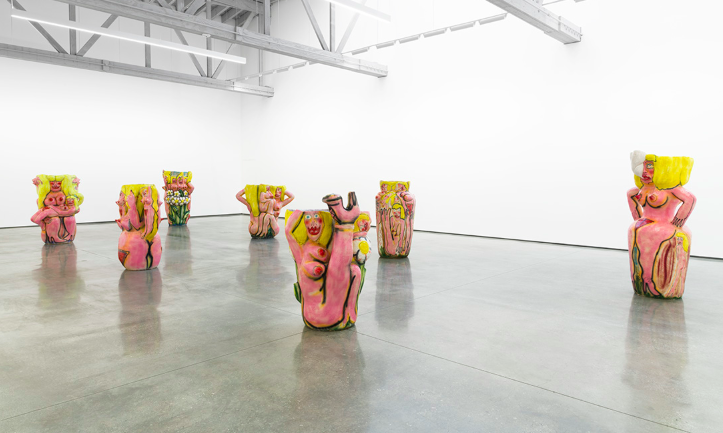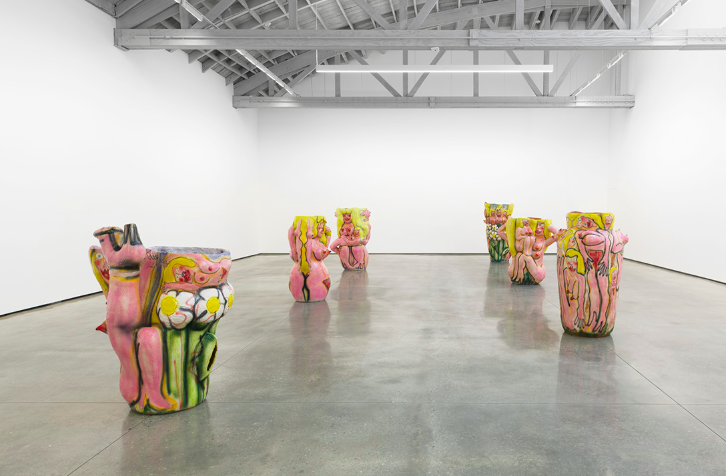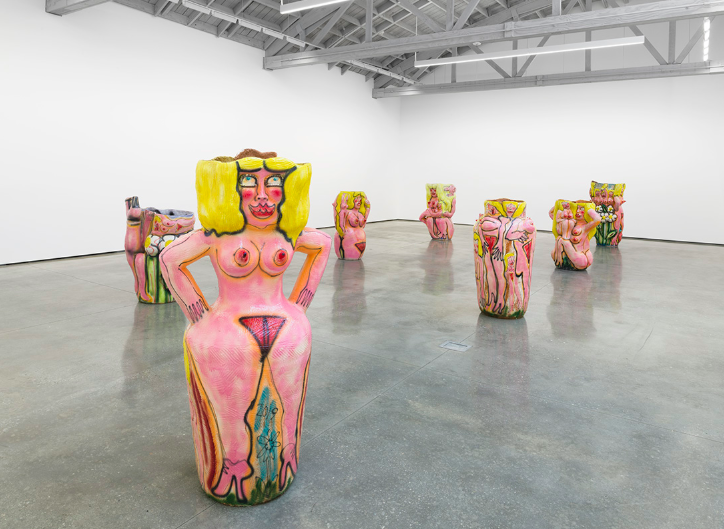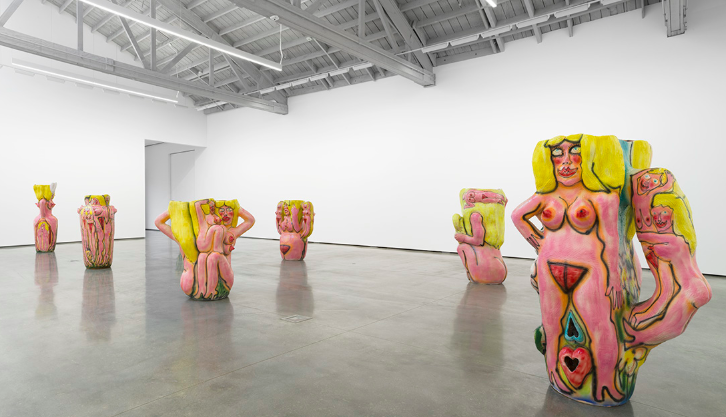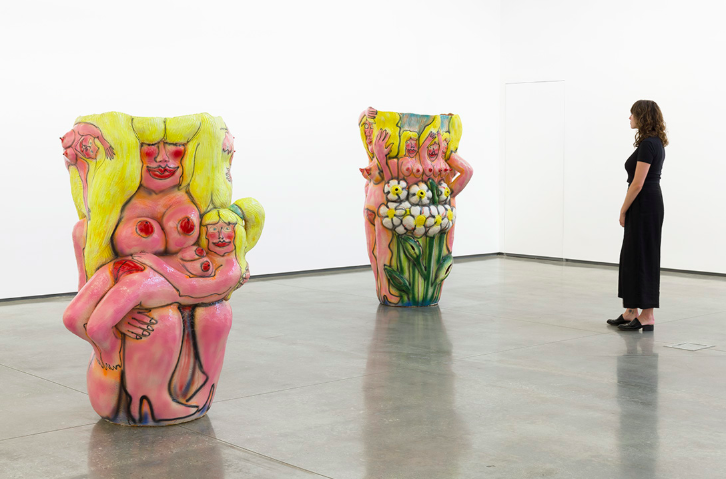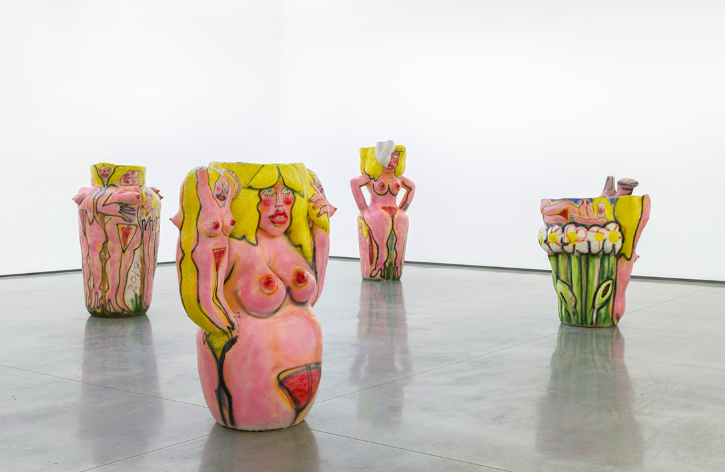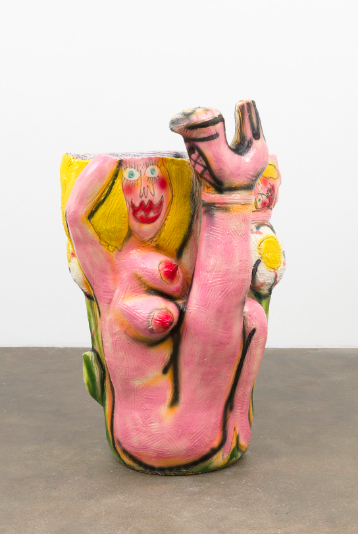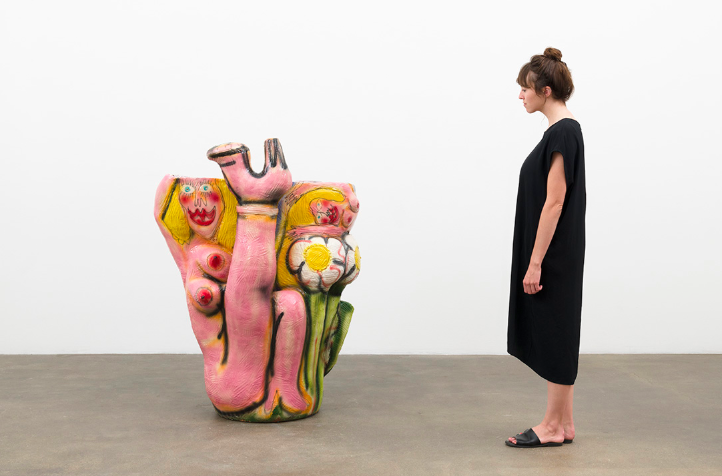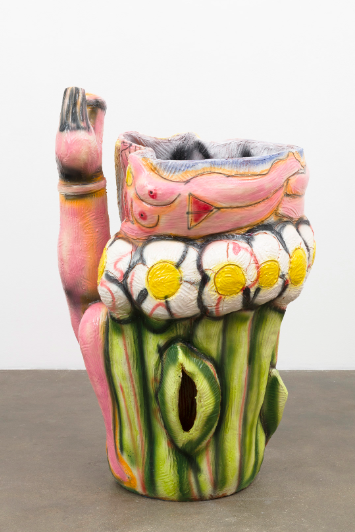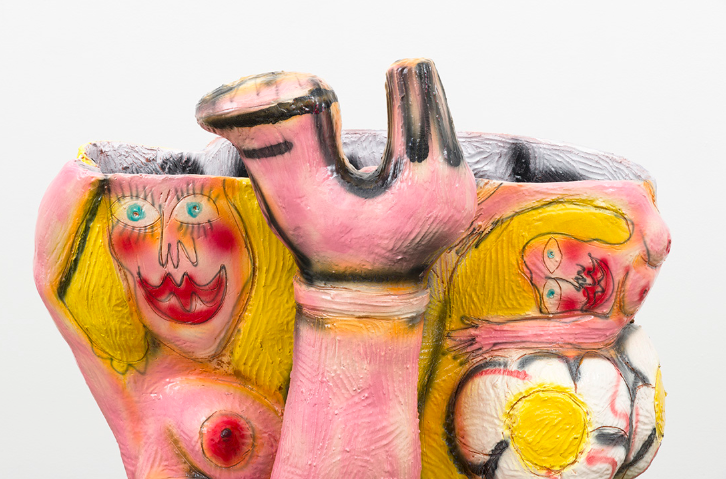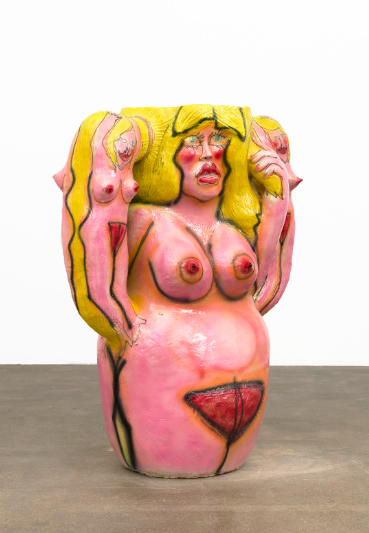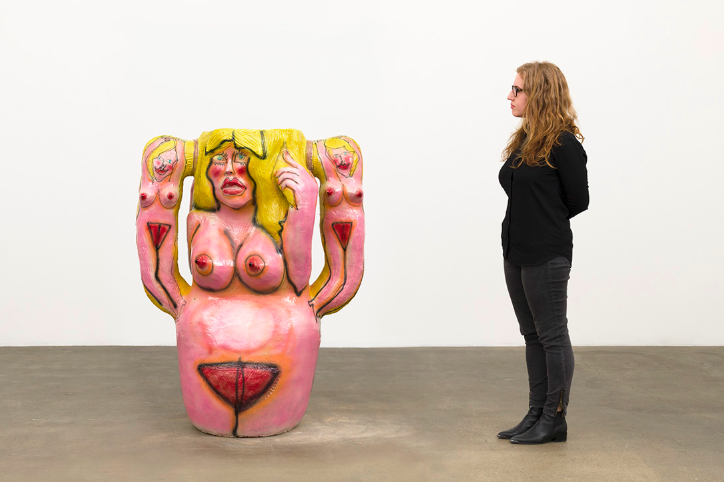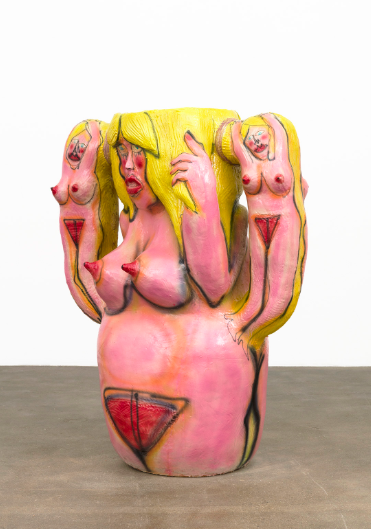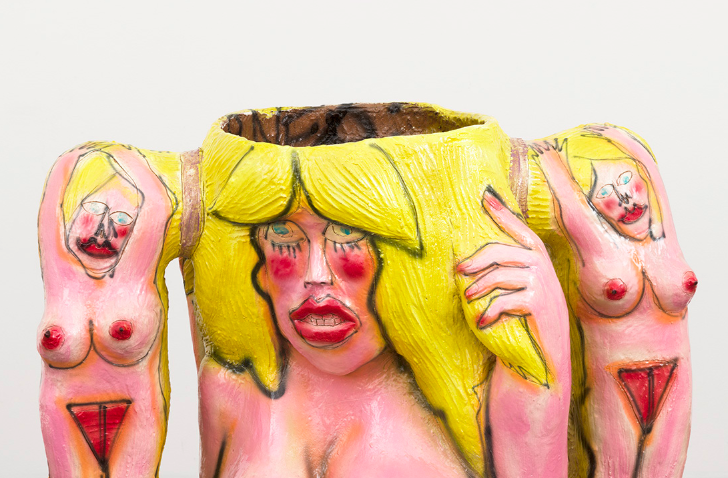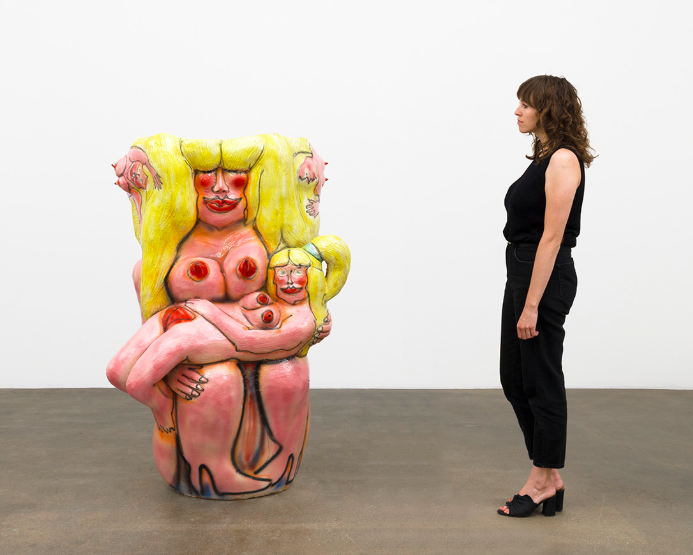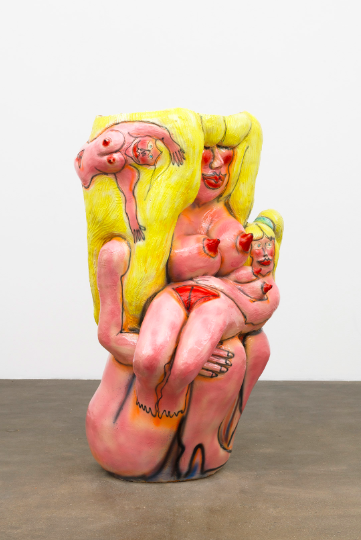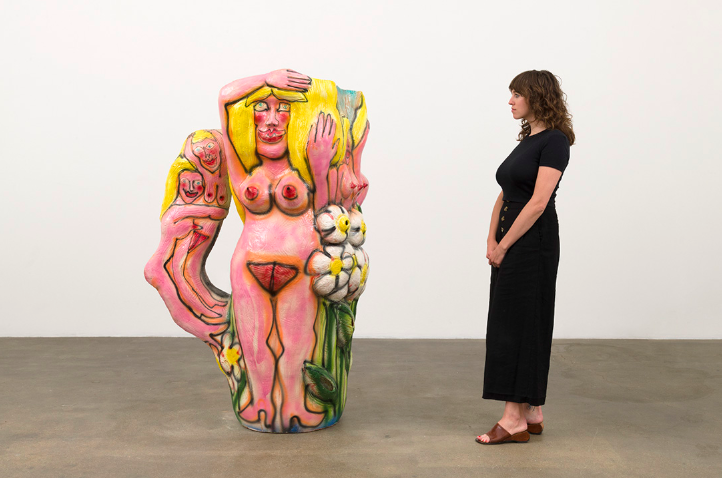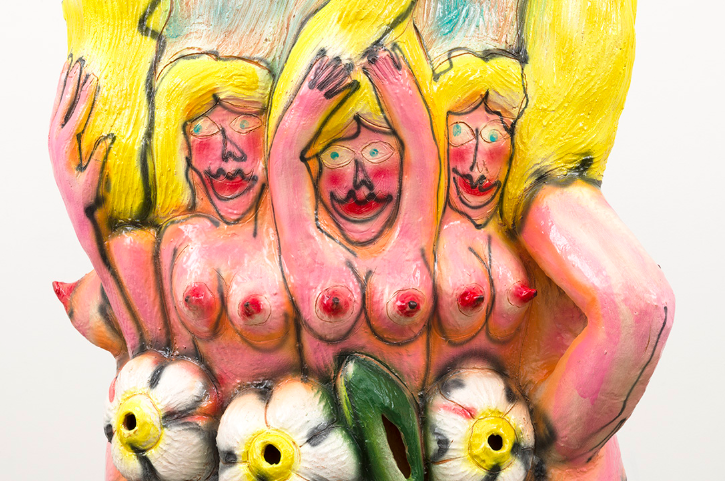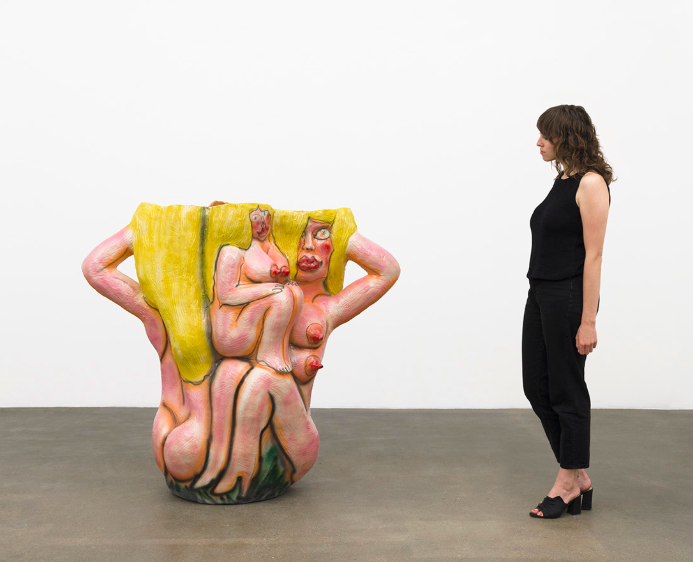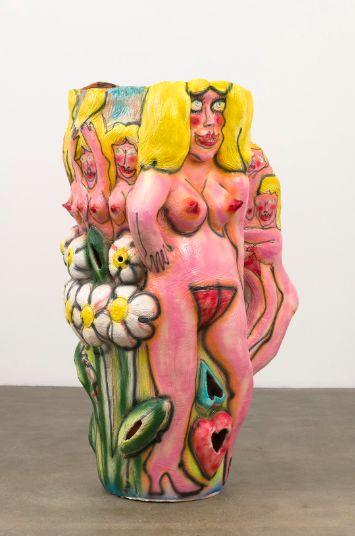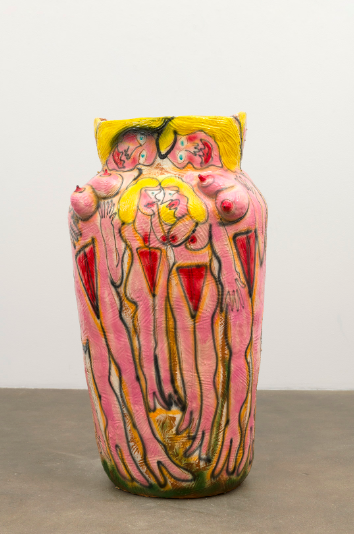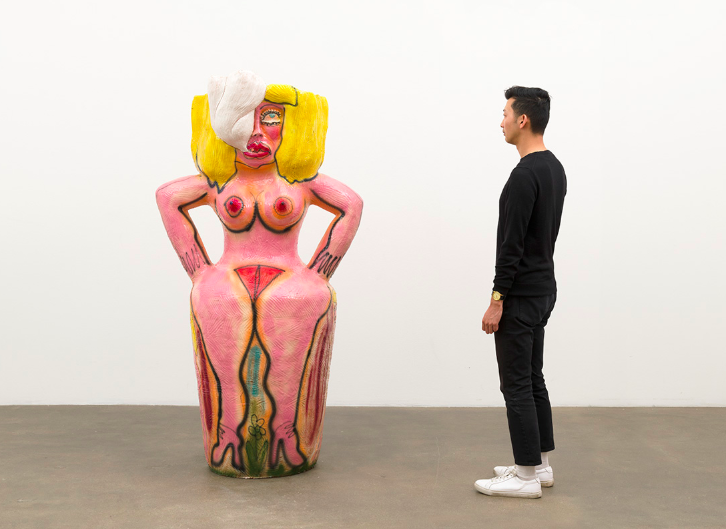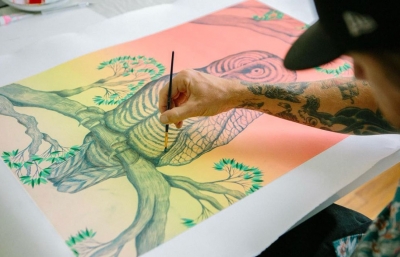Of all the artists to emerge from a standout San Francisco graffiti and Mission School scene of the 1990s, Ruby Neri's most recent output has been some of our favorite in all of contemporary art. Her large ceramic works, which almost appear like functional objects, are raw-and-loose, female forms that are molded together with an almost comic and cartoonish form. But there is a serious, almost surreal feeling walking through her installations, and her newest show, open now at David Kordanksy in Los Angeles until June 15th, is some of her best works to date.

As the gallery notes:
Neri arrived at what has become a signature typology by synthesizing an idiosyncratic group of influences, including the Bay Area Figurative Movement, street art, ancient fertility figures, and more recent currents in ceramic-based contemporary art. The work is defined by its psychologically and sexually charged content and its bawdy feminism, with women engaged in what appear to be ritualistic power dynamics. Several of the new sculptures are composed of numerous figures that differ greatly in size. Smaller women are held, supported by, and wrapped around bigger ones, suggesting relationships in which one dominates the others. The ambiguity and playfulness of these tableaux add a layer of narrative richness to the works, especially because they are highly three-dimensional objects in which visual and sculptural information flows across every surface, front and back, under and over, inside and out.
This narrative quality draws attention to the qualities of the figures themselves, which all share certain basic characteristics. Blonde, with dramatically full lips, voluptuous bodies, and revealed genitalia, they can also be considered variations on a single character whose most prominent feature might, in fact, be her disarmingly frank facial expression. Enraptured, knowing, bemused, the gaze she returns to the viewer suggests that the complexity of her relationships--with her own interiority, the other versions of herself that surround her, the viewer, the materials from which she has been crafted, and the artist who made her--comes as no surprise.



